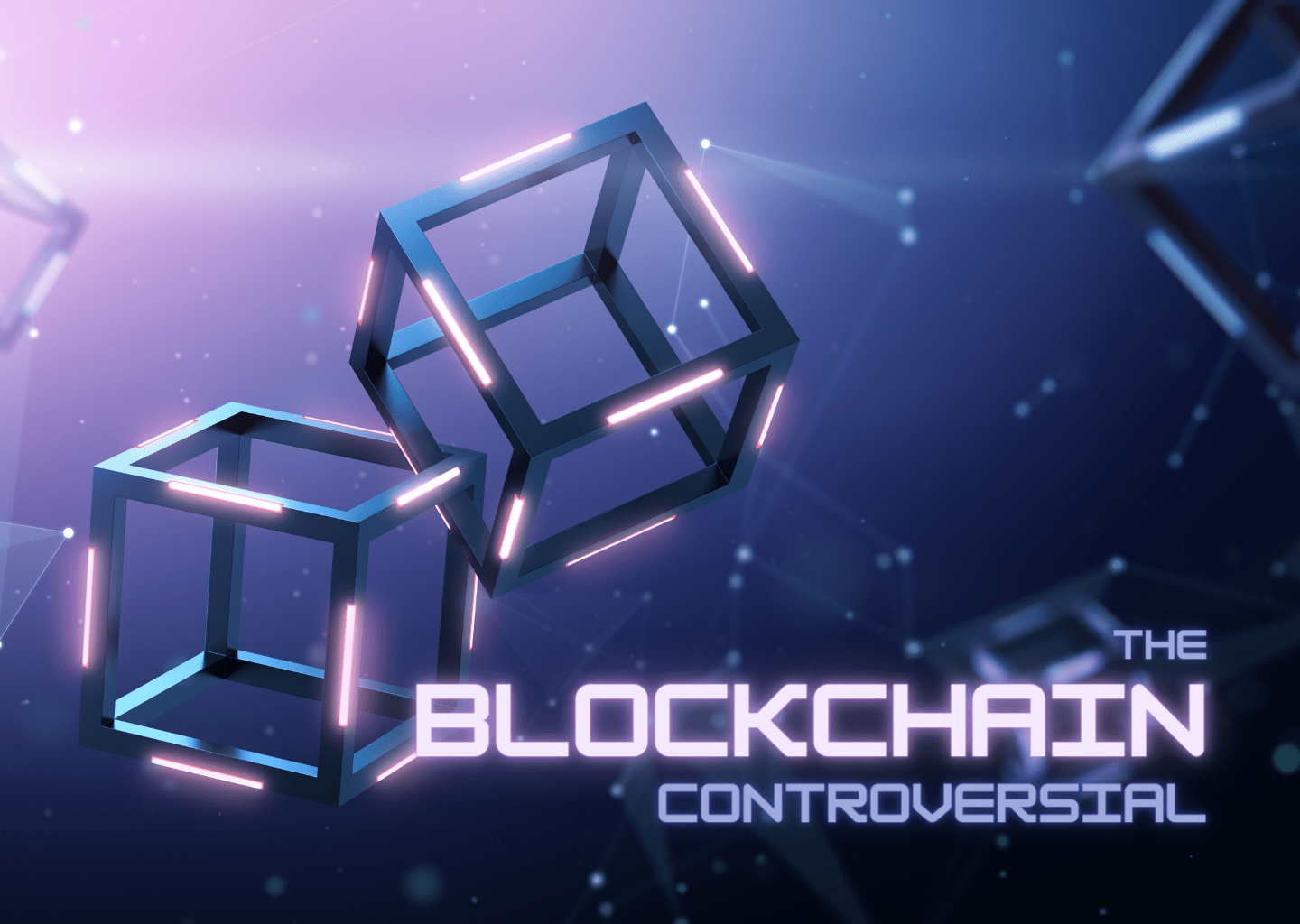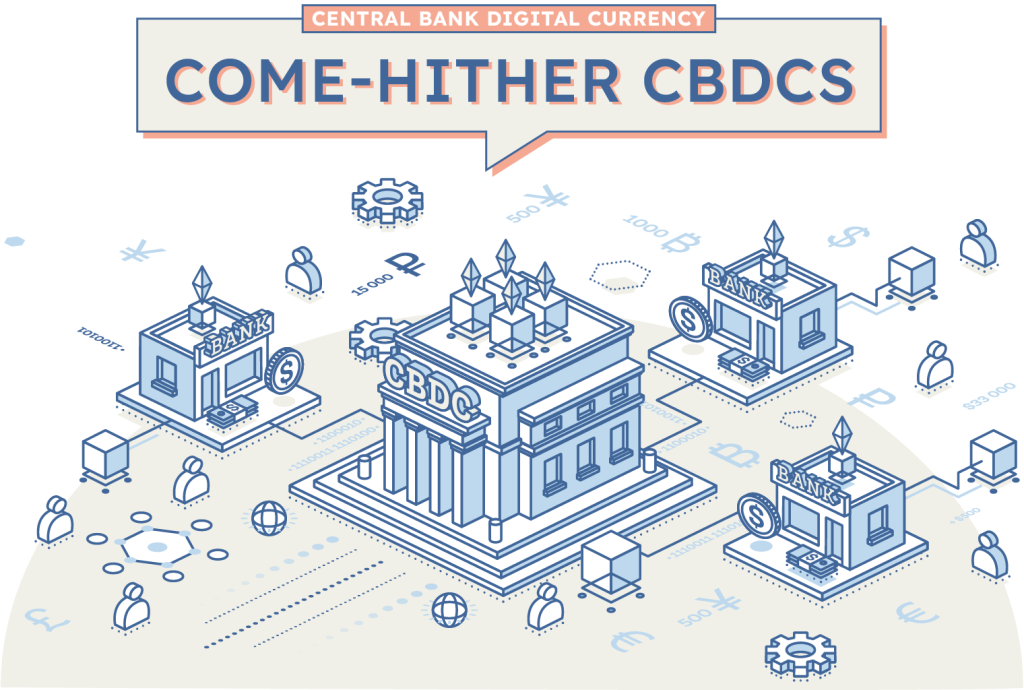The Blockchain Controversial

Naqib Solihin
In recent years, blockchain technology has become a hot issue, with individuals from all walks of life debating its potential and the numerous applications it may serve. Despite the excitement and enthusiasm around blockchain, development has been gradual, with some critics asking if its full promise would ever be fulfilled.
Nonetheless, many individuals feel that the technology has exciting potential and that it will have a substantial influence on a range of businesses. As more businesses begin to experiment with blockchain and incorporate it into their operations, its acceptance is expected to increase and its promise will be fulfilled. Payment giant Mastercard, is helping businesses and individuals to transition into the blockchain space (https://www.ledgerinsights.com/?s=mastercard). Despite the challenges that lie ahead, it seems that blockchain technology is here to stay and will continue to play an important role in shaping our world.
Cryptocurrency and NFTs, has been in development for several decades. Its origins dates back to the 1990s, however, it remained relatively unknown to the public until the creation of Bitcoin in 2008. The launch of Bitcoin sparked widespread interest in the concept of cryptocurrency, and since then numerous other cryptocurrencies have emerged, each with their own unique features and characteristics.
Along with the rise of cryptocurrencies, advancements in the digital age, including the development of Web3.0, have helped to bring NFTs to the forefront of popular culture. NFTs have gained immense popularity in recent years, particularly in the realm of digital art, where they are being used to represent and trade unique digital artwork in a way that is secure, verifiable, and tamper-proof.
Non-fungible Tokens
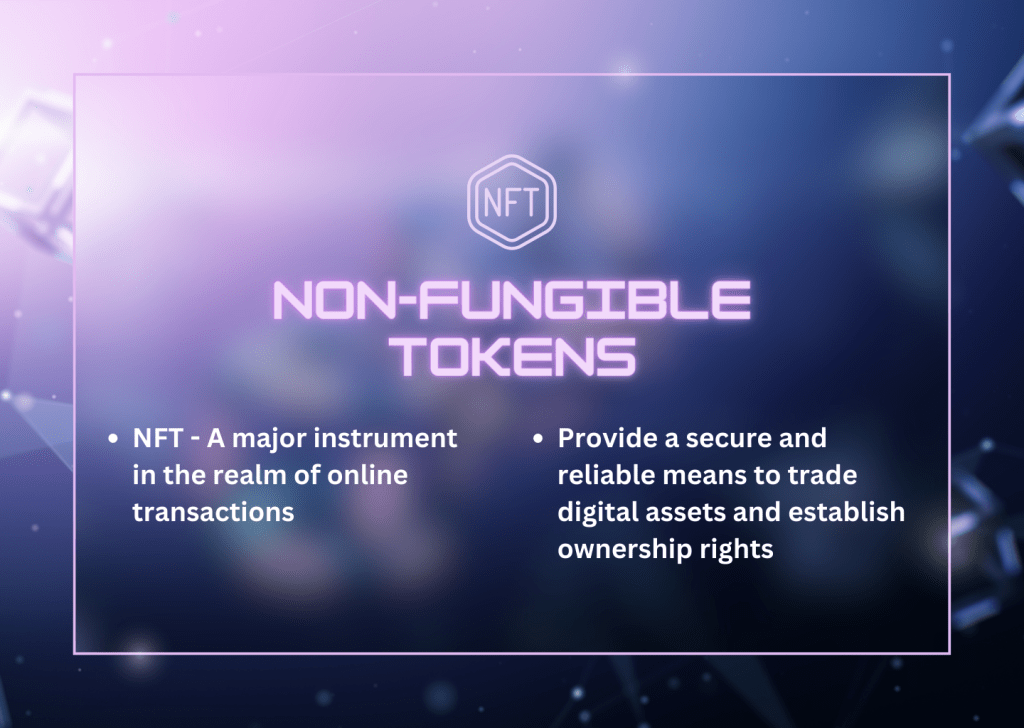
NFTs are one-of-a-kind digital assets kept on a blockchain that enable ownership verification and transfer. This technology enables the development of unique digital assets that can be bought and traded exactly like traditional assets. With the advent of digital art and collectibles, NFTs have become a major instrument in the realm of online transactions, and they are employed in a variety of sectors such as gaming, music, art, and real estate. NFTs provide artists, collectors, and enthusiasts a secure and reliable means to trade digital assets and establish ownership rights. NFTs’ capabilities are growing as technology advances, and they are likely to play a big part in the future of the digital economy.
Web 3.0
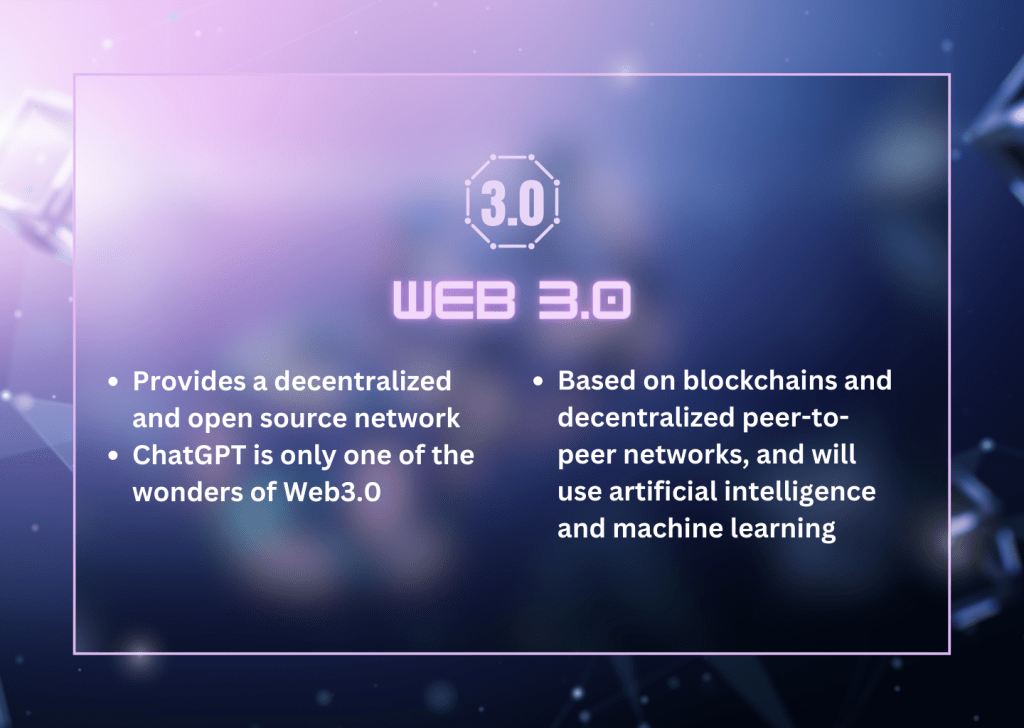
Web 3.0 represents a major shift in the way we interact with the internet. It aims to provide a decentralized and open source network that gives consumers more control over their data and eliminates the need for trusted intermediaries. This new generation of the internet is based on blockchains and decentralized peer-to-peer networks, and will use artificial intelligence and machine learning to generate more relevant results in various sectors, from medical research to novel materials. We can see nowadays, with ChatGPT, we are slowly getting there. ChatGPT is only one of the wonders of Web3.0, making lives easier with getting solutions, solving problems, or even a quick search on something without reading a whole article about it. Read more on ChatGPT here.
My thoughts
In 2022, I was involved in the blockchain space, going to different summits, events, etc organised by various companies such as Solana, Algorand and Token2049, just to name a few. The hype of the blockchain world was at its peak even thought the markets were volatile. With the crashing of FTX, there are some concerns that are left unanswered.

Non-Fungible Tokens (NFTs) have gained popularity in recent times due to their unique and exclusive benefits. Possessing an NFT often grants membership to an organization, providing access to events and exclusive clubs with luxurious amenities like private resorts and yachts. However, it is important to note that not all NFTs come with such luxury benefits. NFTs have also become a popular platform for artists to sell and display their work online. However, the high cost of these digital artworks raises the question of why someone would pay such a hefty amount for something that can easily be saved as an image with a simple “right-click, save as.” While the image might not be officially owned, it can still be used as a wallpaper without any repercussions.
Despite the aforementioned concerns regarding NFTs, there are several innovative uses for them. One such example is their integration into gaming. Some games built on the Solana network allow players to use their NFTs as avatars, offering a new level of customization and interactivity. I had the opportunity to witness this in action during my visit to the Solana Hacker House in Singapore. It was a remarkable demonstration, and many people were impressed by the potential of this integration. This use of NFTs could incentivize more people to play these games as they can use their existing NFTs instead of having to purchase new ones for each separate game.
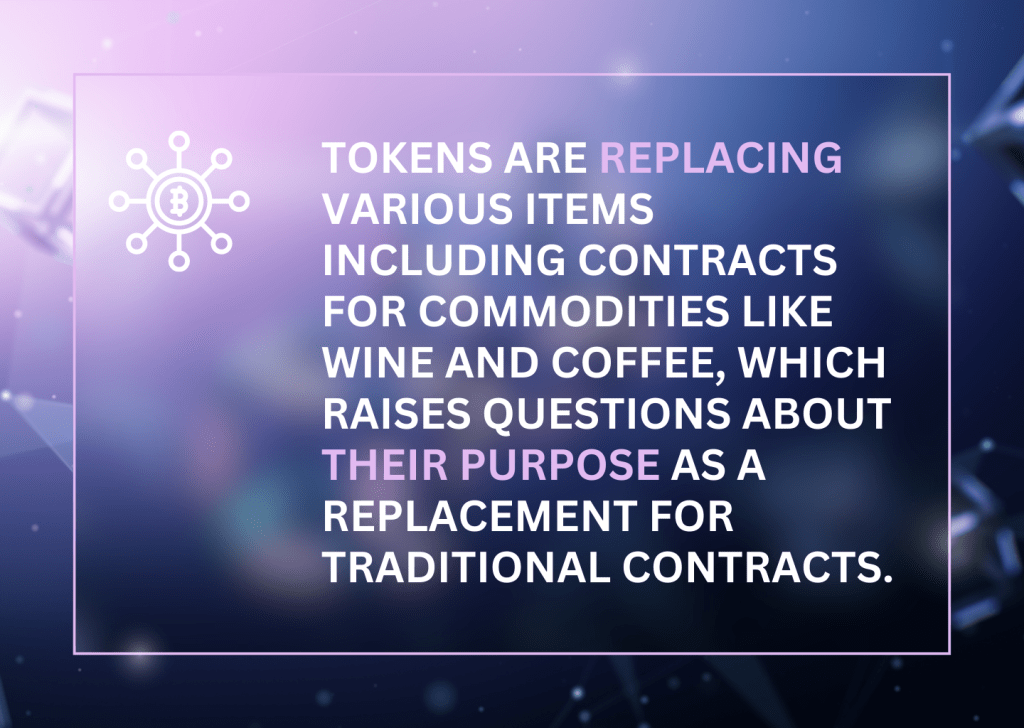
Besides stablecoin, tokens(not coins) are increasingly being used as a substitute for various items such as transactions and event tickets. For instance, I have observed their use in the sale of options contracts for commodities like wine, coffee beans, etc. In this scenario, instead of buying a contract, the buyer obtains a token that represents the contract. Upon the maturity of the token, the buyer has the option to either receive the physical commodity or sell it. Upon selling, the token is burned and the buyer receives fiat currency instead. This raises the question of the purpose of the token if it only serves as a replacement for a traditional contract. Is this just a trend that traditional companies are jumping on, or is there more to it?
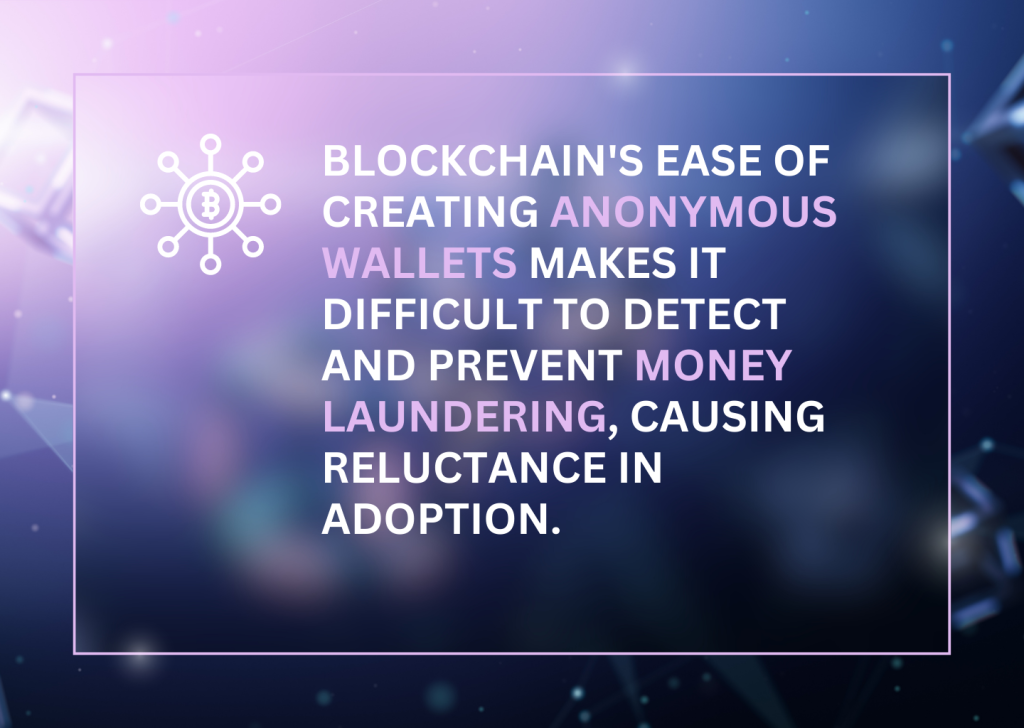
One of the challenges with the use of blockchain technology is the ease of creating anonymous wallets, which can make it difficult to detect and prevent money laundering. Transactions on the blockchain can be traced, but without personal identification tied to the wallet, it becomes challenging for authorities to identify the individuals behind the transactions. This has led to reluctance among some individuals and business owners to adopt blockchain technology. In conversations with friends and business owners, I have learned that a common concern is the potential for the technology to facilitate money laundering. For example, creating a Metamask account takes only a few minutes and allows one to transfer funds anonymously to any other wallet, making it a potentially attractive option for those looking to launder money.
Conclusion
In conclusion, the use of blockchain technology has great potential for various applications, including NFTs in Solana games, AI applications, and educational games like Mogaland. However, this article aimed to shed light on the downside of blockchain, as there is often an emphasis on its positive aspects but little discussion on its challenges. Based on my personal experience and feedback from various sources, the development of blockchain is a roller-coaster ride, with both positive and negative comments. Although there is still a long way to go for blockchain to become a ubiquitous part of our lives, we can work towards solving some of its current issues along the way.
Check out: Defi Lending Article
Disclaimer
Please refer to our terms and conditions for the full disclaimer for Stoic Capital Pte Limited (“Stoic Capital”). No part of this article can be reproduced, redistributed, in any form, whether in whole or part for any purpose without the prior consent of Stoic Capital. The views expressed here reflect the personal views of the staff of Stoic Capital. This article is published strictly for general information and consumption only and not to be regarded as research nor does it constitute an offer, an invitation to offer, a solicitation or a recommendation, financial and/or investment advice of any nature whatsoever by Stoic Capital. Whilst Stoic Capital has taken care to ensure that the information contained therein is complete and accurate, this article is provided on an “as is” basis and using Stoic Capital’s own rates, calculations and methodology. No warranty is given and no liability is accepted by Stoic Capital, its directors and officers for any loss arising directly or indirectly as a result of your acting or relying on any information in this update. This publication is not directed to, or intended for distribution to or use by, any person or entity who is a citizen or resident of or located in any locality, state, country or other jurisdiction where such distribution, publication, availability or use would be contrary to law or regulation.

